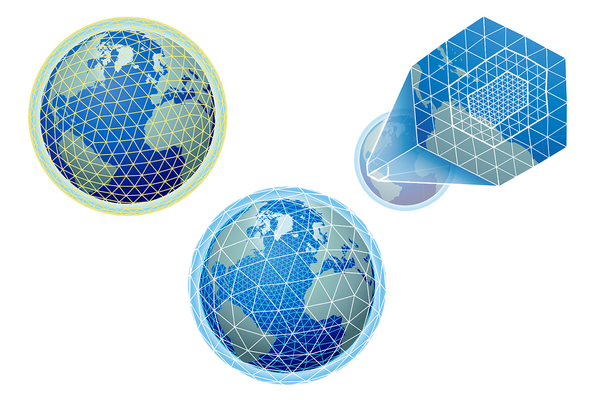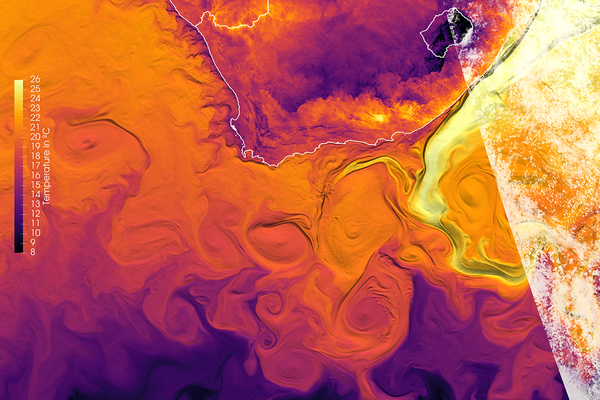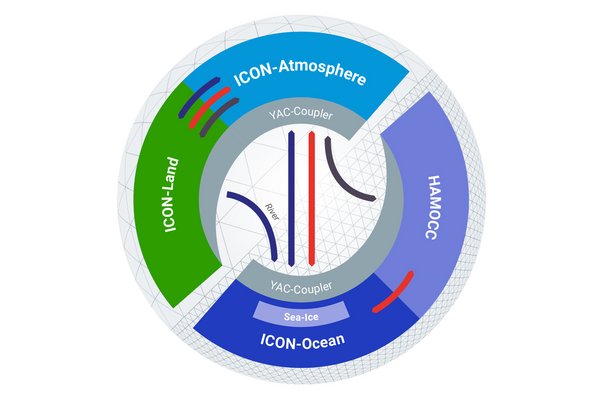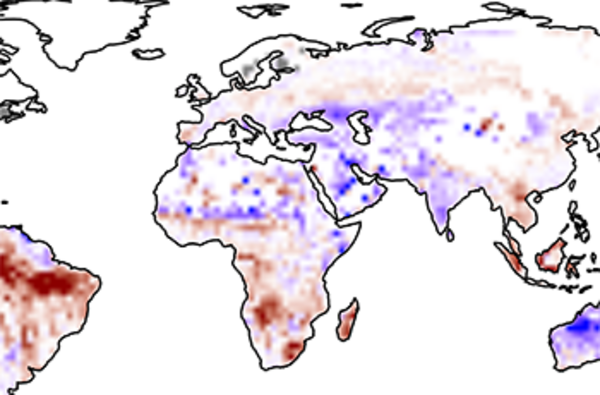
Tropical wetlands drove methane changes since the last glacial
In a new study in Climate of the Past Dr. Thomas Kleinen and Prof. Victor Brovkin, researchers at the Max Planck Institute for Meteorology, together…
![[Translate to English:] [Translate to English:]](/fileadmin/_processed_/a/2/csm_T_warmworld_49ea77b5fd.jpg)
WarmWorld project at full speed
With the first day of spring we also kick off the full module-team of the BMBF-funded WarmWorld project. Within this project, the Max Planck…

What the development of global climate models at the km-scale teaches us about tropical convection
Accurately capturing location, diurnal as well as seasonal variability of the tropical rainbelt, over land and over ocean, has remained beyond reach…

The first release of ICON-Sapphire, targeting simulations of the Earth System at kilometer scale
Do thunderstorms in the atmosphere affect the meandering of ocean currents? What is the effect of ocean eddies on the carbon budget? Investigating…
![[Translate to English:] Original NASA Blue Marble photo left, visualization right. Credit: MPI-M, DKRZ, NVIDIA](/fileadmin/_processed_/0/b/csm_T_Blue_Marble_80a4131a99.jpg)
Revisiting the Blue Marble: ICON simulating the coupled climate system at 1 km
The early 1970s is often associated with the birth of the modern environmental movement. In 1970 the first Earth day was celebrated, and Greenpeace…

Technical milestone reached: global Earth system simulations with 1.2 km resolution
The Max Planck Institute for Meteorology (MPI-M) has opened a new chapter in Earth System Modelling that has been a dream for climate scientists and…

The Future of Climate Modeling — the Kilometer Scale
Climate change poses new questions for climate science; questions that cannot be answered by the present generation of climate models. There is no…

The first version of the ICON Earth System Model
A team of researchers around Dr. Johann Jungclaus from the Max Planck Institute for Meteorology (MPI-M) has published a paper in the Journal of…
![[Translate to English:] [Translate to English:]](/fileadmin/_processed_/5/1/csm_220228_TeaserPic_Kapsch_Ziemen_6x4_be9a69e224.png)
What controls the millennial-scale climate variability in simulations of the last deglaciation?
The transition between the last glacial maximum (LGM, about 21,000 years before present) and present, which is referred to as the last deglaciation,…

The driving forces of the terrestrial carbon cycle predictability
Although the global carbon cycle is predictable to some extent, we know little about the source of the memory in the system. In a study published in…
![[Translate to English:] [Translate to English:]](/fileadmin/_processed_/1/0/csm_Plotausschnitt_Aktuelles_3d9a72e228.png)
A Quantification of Natural Forcing Contributions on Multi-Decadal North Atlantic Temperature Variability over the Past Millennium
In a new study in Geophysical Research Letters Dr. Shih-Wei Fang, Dr. Claudia Timmreck, and Dr. Johann Jungclaus from the Max Planck Institute for…
![[Translate to English:] [Translate to English:]](/fileadmin/_processed_/3/c/csm_grafik_Aktuelles_Dallmeyer_6x4_2_c8a6850382.jpg)
Holocene vegetation transitions and their climatic drivers in MPI-ESM1.2
Do we understand the migration of global vegetation patterns over the last millennia during the transition from the mid Holocene some 8000 years ago…
